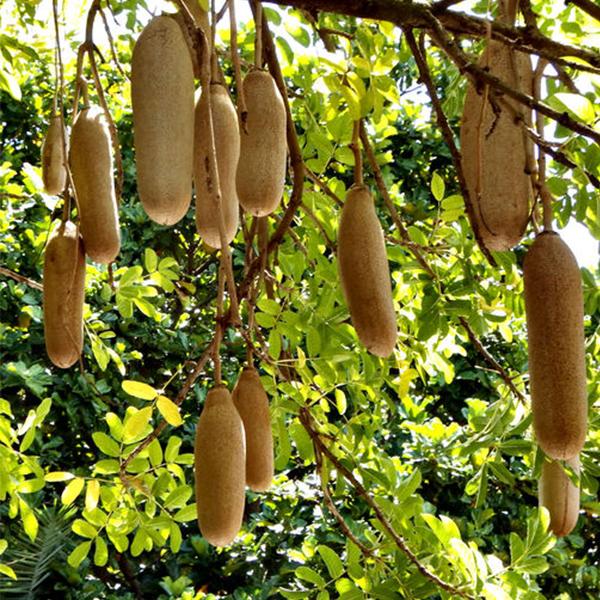
Sausage Tree, Cucumber Tree - Plant
(MRP Inclusive of all taxes)
- Shipping ₹79 for entire order
- Dispatch in 7 days
- Country of origin: India

(MRP Inclusive of all taxes)

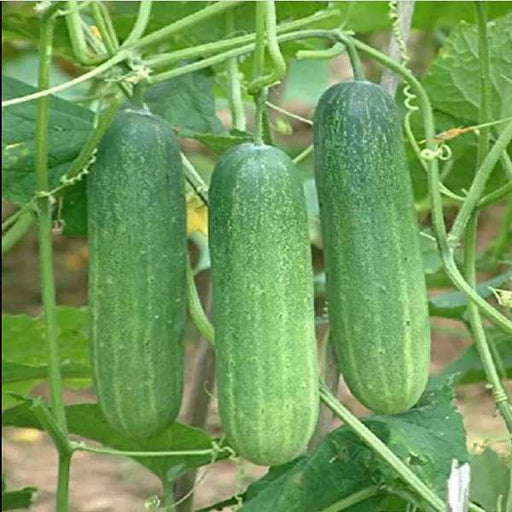 Sold out
Sold out
Cucumber Green - Organic Vegetable Seeds Discover the joy of gardening with our Cucumber Green Organic Vegetable Seeds. These seeds produc...
View full details
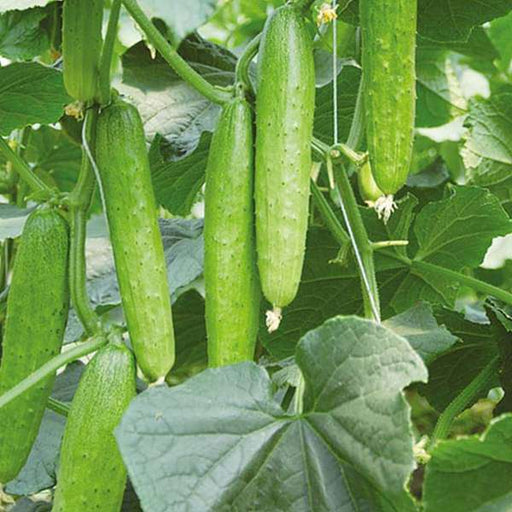 Save 25%
Save 25%
Cucumber F1 Hybrid Sultan - Vegetable Seeds The Cucumber F1 Hybrid Sultan is a premium variety known for its exceptional yield and crisp t...
View full details
 Save 25%
Save 25%
Cucumber Gherkin - Vegetable Seeds Discover the delightful world of Cucumber Gherkin with our premium vegetable seeds! Known for their cri...
View full details
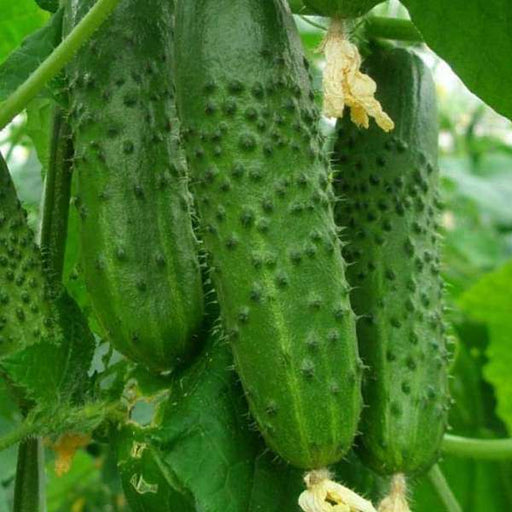 Save 25%
Save 25%
Cucumber F1 American Black - Vegetable Seeds The Cucumber F1 American Black is a premium variety known for its rich flavor and crisp textu...
View full details
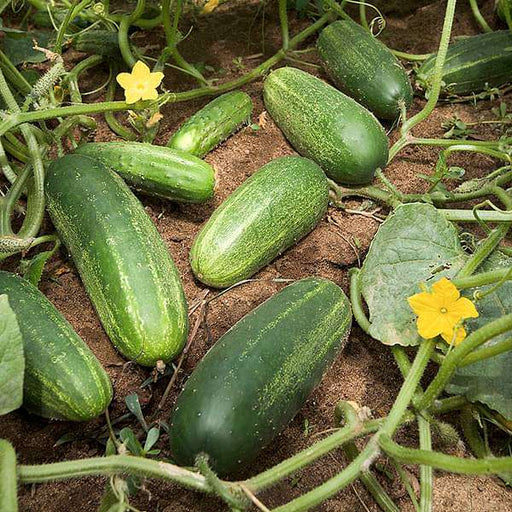 Save 25%
Save 25%
Cucumber F1 Samber Selection - Vegetable Seeds The Cucumber F1 Samber Selection is a premium hybrid variety known for its exceptional yiel...
View full details
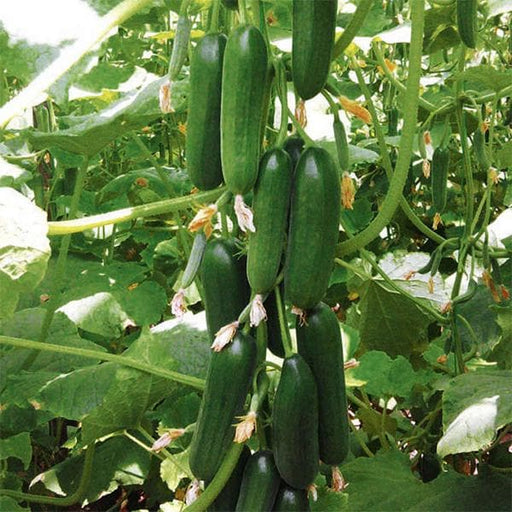 Save 25%
Save 25%
Cucumber EM 192 Beit Alpha F-1 Hyb - Vegetable Seeds The Cucumber EM 192 Beit Alpha F-1 Hybrid is a premium variety known for its exceptio...
View full details
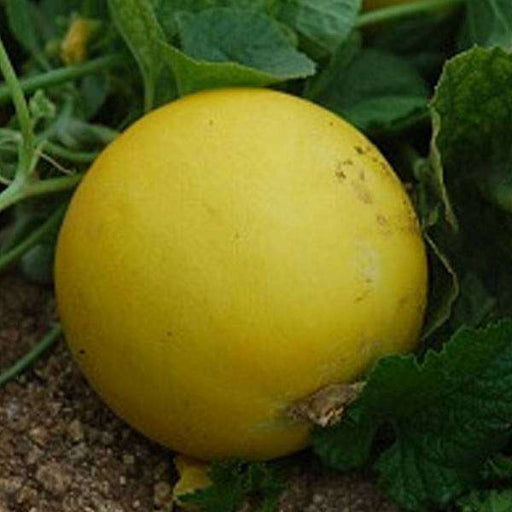 Save 25%
Save 25%
Cucumber Yellow Round - Vegetable Seeds Introducing the Cucumber Yellow Round, a unique and vibrant addition to your garden! This heirloom...
View full details Save 15%
Save 15%
Pack of Vermicompost and Neem Cake for House Plants Transform your indoor garden with our premium Pack of Vermicompost and Neem Cake, spec...
View full details
Pack of Plant Growth and Flower Boosters Unlock the full potential of your garden with our Pack of Plant Growth and Flower Boosters! This ...
View full details Save 38%
Save 38%
Combo of Jeevamrut and Neem Raksha for Easy Growth and Protection of Houseplants Transform your indoor garden with our exclusive combo of ...
View full details Save 22%
Save 22%
Plant Nutrients Kit (Pack of 16) for a Healthy Garden Transform your garden into a lush paradise with our Plant Nutrients Kit, featuring 1...
View full details Save 16%
Save 16%
Combo of Top Plant Fertilizers Elevate your gardening game with our exclusive Combo of Top Plant Fertilizers, featuring two bags of premiu...
View full details Save 24%
Save 24%
Pack of 4 Additives to Make Soil Healthy and Nutrient Rich Transform your garden into a thriving ecosystem with our Pack of 4 Additives de...
View full details Save 30%
Save 30%
Transform your gardening experience with our premium Combo of Perlite and Vermiculite. This unique blend is designed to enhance soil aeration and ...
View full details Save 27%
Save 27%
Combo of 2 Vermicompost and Cocopeat - Enrich Your Soil Naturally! Transform your garden into a thriving ecosystem with our Combo of 2 Ver...
View full details
 Save 35%
Save 35%
Best 6 Plants for Perfect Indoor Garden Transform your living space into a lush oasis with our curated collection of the Best 6 Plants for a...
View full details
 Save up to 50%
Save up to 50%
Mini Succulent Garden Pack Transform your space with our Mini Succulent Garden Pack, featuring a delightful collection of 4 any variety beautiful s...
View full details
 Save 30%
Save 30%
5 Best Fragrant Plants Transform your garden or indoor space into a fragrant paradise with our curated selection of the 5 Best Fragrant Plants. Th...
View full details
 Save 24%
Save 24%
Set of 2 Bonsai Looking Grafted Adeniums Transform your indoor or outdoor space with our exquisite Set of 2 Bonsai Looking Grafted Adenium...
View full details Save 45%
Save 45%
Top 4 Die Hard Succulents Pack Transform your indoor or outdoor space with our Top 4 Die Hard Succulents Pack, featuring a curated selecti...
View full details
 Save 30%
Save 30%
5 Best Indoor Plants Pack Transform your living space into a lush oasis with our '5 Best Indoor Plants Pack.' This carefully curated collection fe...
View full details
 Save 25%
Save 25%
Set of 4 Evergreen Air Purifier Plant Pack Transform your indoor space into a lush, green oasis with our Set of 4 Evergreen Air Purifier Pla...
View full details| SrNo | Item Name |
|---|---|
| 1 | Sausage Tree, Cucumber Tree - Plant |
The Sausage Tree, scientifically known as Kigelia africana, is a striking deciduous tree native to the African savannah. Renowned for its unique, sausage-shaped fruits that can grow up to 3 feet long, this tree not only adds an exotic touch to your garden but also serves as a vital part of its ecosystem. The Cucumber Tree, another name for this fascinating plant, is celebrated for its beautiful, large, bell-shaped flowers that attract pollinators, making it a perfect addition for eco-conscious gardeners.
What makes the Sausage Tree special is its dual role in nature and culture. Traditionally, the fruits have been used in various African cultures for medicinal purposes, while the tree itself provides shade and sustenance for wildlife. Its impressive height, reaching up to 20 meters, and its striking appearance make it a focal point in any landscape.
One of the most special features of the Sausage Tree is its ability to thrive in poor soil conditions, making it an excellent choice for sustainable gardening. Additionally, its fruits are not only visually stunning but also serve as a food source for various animals, including elephants and monkeys, contributing to the biodiversity of its habitat.
If you think the Sausage Tree is just a quirky name, think again! This botanical wonder not only provides shade but also serves as a natural conversation starter. Imagine hosting a picnic under its sprawling branches, with guests marveling at its sausage-shaped fruits. Plus, the tree's unique appearance can enhance your garden's aesthetic, making it the envy of the neighborhood. And let’s not forget the wildlife! Birds and insects flock to this tree, creating a lively ecosystem right in your backyard.
Caring for a Cucumber Tree is like nurturing a diva; it requires attention but rewards you handsomely. These trees thrive in well-drained soil and love a good sunbath. Regular watering is essential, but don’t drown them—think of it as a spa day, not a waterboarding session. Pruning is also key to keeping this beauty in shape, ensuring it grows tall and proud. With a little TLC, your Cucumber Tree will flourish, providing you with a lush green spectacle.
The Sausage Tree is not one to rush; it takes its sweet time to grow. Expect a leisurely pace, as this tree can take several years to reach its full height. But patience is a virtue, and the reward is worth the wait! Once it gets going, it can reach impressive heights, making it a majestic addition to any landscape. So, if you’re looking for instant gratification, you might want to consider a different plant.
The Cucumber Tree’s fruit is a delightful surprise, resembling a cucumber but with a twist! While it’s not exactly a snack you’d want to munch on, it’s a fascinating addition to your garden. The fruit can be used in traditional medicine, showcasing the tree’s versatility. Plus, its unique shape and color can add a quirky touch to your garden decor. Just remember, it’s more of a conversation piece than a culinary delight!
The Sausage Tree thrives in warm, tropical climates, making it the ultimate sun-seeker. Found in regions like Africa and parts of Australia, it loves to stretch its roots in well-drained soil. This tree is not just a pretty face; it plays a crucial role in its ecosystem, providing food and shelter for various wildlife. So, if you’re considering planting one, make sure you can offer it a sunny spot to lounge in!
The Cucumber Tree is not just a pretty face; it’s a multitasker! Beyond its ornamental value, it has practical uses in traditional medicine and can even be used for timber. Its wood is durable and can be crafted into furniture or other wooden items. So, while you’re admiring its beauty, remember that this tree is also a valuable resource. Talk about a tree that does it all!
you get a thriving tree, and the pollinators get a buffet!
Propagating a Cucumber Tree is like playing matchmaker for plants. You can start with seeds or cuttings, but patience is key. The seeds need a warm environment to germinate, while cuttings require a bit of nurturing. Once you’ve successfully propagated your tree, you’ll feel like a proud parent watching it grow. Just remember, every great love story takes time!
Like any diva, the Sausage Tree can attract a few unwanted guests. Pests such as aphids and caterpillars may try to crash the party. But fear not! Regular inspections and a bit of neem oil can keep these intruders at bay. Think of it as a protective shield for your beloved tree. After all, no one wants their Sausage Tree to be the talk of the pest community!
Incorporating a Cucumber Tree into your landscape design is like adding a splash of color to a black-and-white movie. Its unique shape and lush foliage can create a stunning focal point in your garden. Pair it with complementary plants for a harmonious look, or let it stand alone as a statement piece. Either way, your garden will be the talk of the town!
The Sausage Tree isn’t just a pretty sight; it holds cultural significance in various regions. In some African cultures, its fruits are used in traditional rituals and ceremonies. This tree is a symbol of life and sustenance, making it more than just a decorative addition to your garden. So, when you plant a Sausage Tree, you’re not just adding beauty; you’re embracing a piece of cultural heritage!
The Sausage Tree, or Kigelia africana, is a quirky tree known for its large, sausage-shaped fruits. Native to Africa, it’s not just a pretty face; it’s also a wildlife magnet! Birds and bats love its nectar, while the fruits can be used in traditional medicine. Just don’t expect to find any hot dogs hanging from its branches!
Cucumber Trees, or Sicyos angulatus, thrive in well-drained soil and love a sunny spot. Water them regularly, but don’t drown them—these plants prefer a light drink over a swim! Pruning helps maintain their shape, and a little fertilizer goes a long way. Just remember, they’re not actual cucumbers, so don’t expect a salad from them!
While the fruits of the Sausage Tree are technically edible, they’re not exactly a culinary delight. They’re often used in traditional medicine rather than as a snack. If you’re feeling adventurous, you can try them, but don’t blame us if your taste buds stage a protest! Better to admire their beauty than to munch on them!
Sausage Trees are like the party hosts of the plant world! They attract a variety of wildlife, including bats, birds, and monkeys. The sweet nectar and large fruits are irresistible to these critters. So, if you plant one, expect a lively gathering of nature’s finest guests—just don’t forget to provide snacks for your furry friends!
Growing a Cucumber Tree indoors is a bit of a challenge, but not impossible! They need plenty of sunlight and space to stretch their vines. If you can provide a sunny window and a sturdy trellis, you might just have a green thumb success story. Just remember, they’re not fans of cramped quarters—no one likes a crowded house!
Sausage Trees can live for several decades, with some reaching up to 100 years! That’s a long time to hang around, so they’re like the wise old sages of the plant kingdom. With proper care, they’ll be your leafy companions for years to come, providing shade and quirky fruits for generations to enjoy!
Cucumber Trees are known for their rapid growth, often reaching heights of 10 to 20 feet in just a few years! They’re like the overachievers of the plant world, eager to stretch their limbs. Just make sure they have enough space to grow; otherwise, they might start competing for your living room!
Yes, Sausage Trees are quite drought-tolerant once established! They’ve adapted to survive in dry conditions, making them the tough cookies of the plant world. However, they appreciate a good drink during dry spells, so don’t completely ignore them. A little water goes a long way in keeping them happy and thriving!
Cucumber Trees can attract pests like aphids and spider mites, but don’t panic! A little neem oil or insecticidal soap can help keep these uninvited guests at bay. Regularly checking your plant for signs of trouble will ensure it stays healthy and happy. After all, nobody likes a pest party crashing their plant’s good time!
Absolutely! Propagating a Sausage Tree is possible through seeds or cuttings. Just remember, patience is key—these trees take their sweet time to grow. So, if you’re looking for instant gratification, you might want to consider a different hobby. But with a little love and care, you’ll soon have your very own Sausage Tree!
Cucumber Trees thrive in warm, tropical climates, so think sunny beaches rather than snowy mountains! They love temperatures between 70°F and 90°F. If you live in a cooler area, consider growing them in a greenhouse or as an annual. Just remember, they’re not fans of frost—so keep them cozy and warm!
Good news! The Sausage Tree is not considered toxic to humans or animals. However, the fruits can cause stomach upset if consumed in large quantities, so moderation is key. It’s best to admire this tree from a distance rather than turning it into a snack bar. After all, it’s more about the looks than the taste!